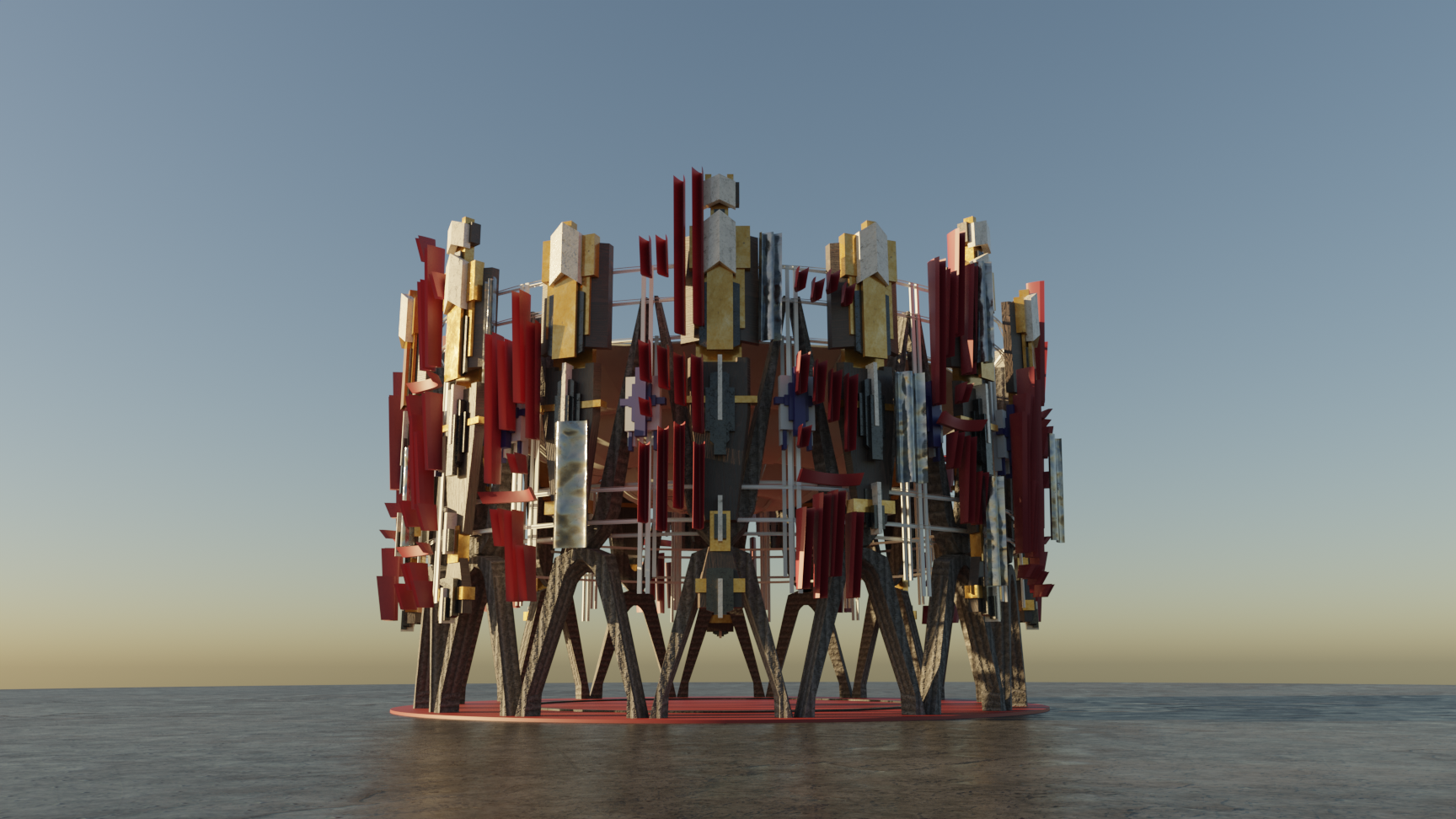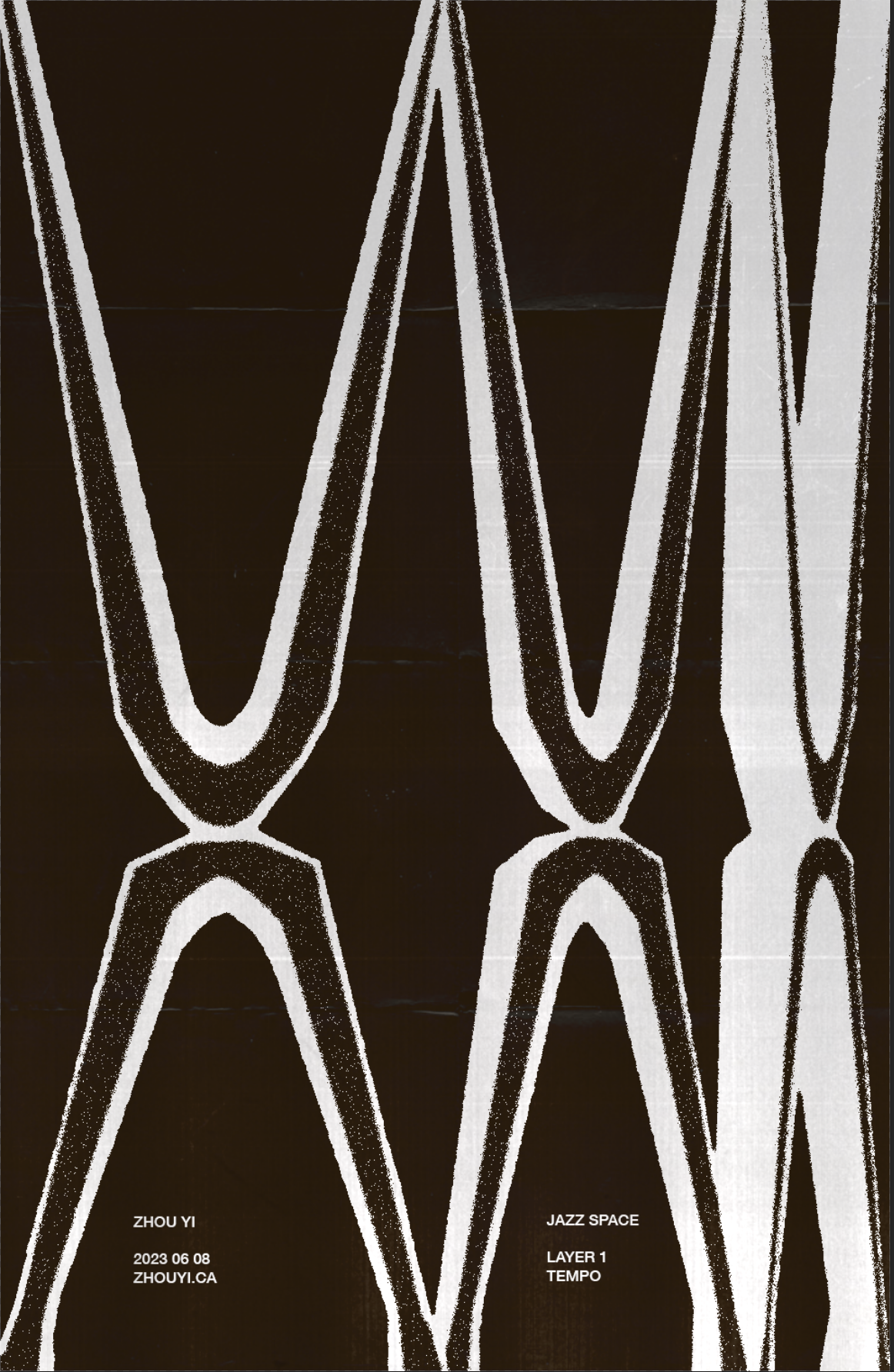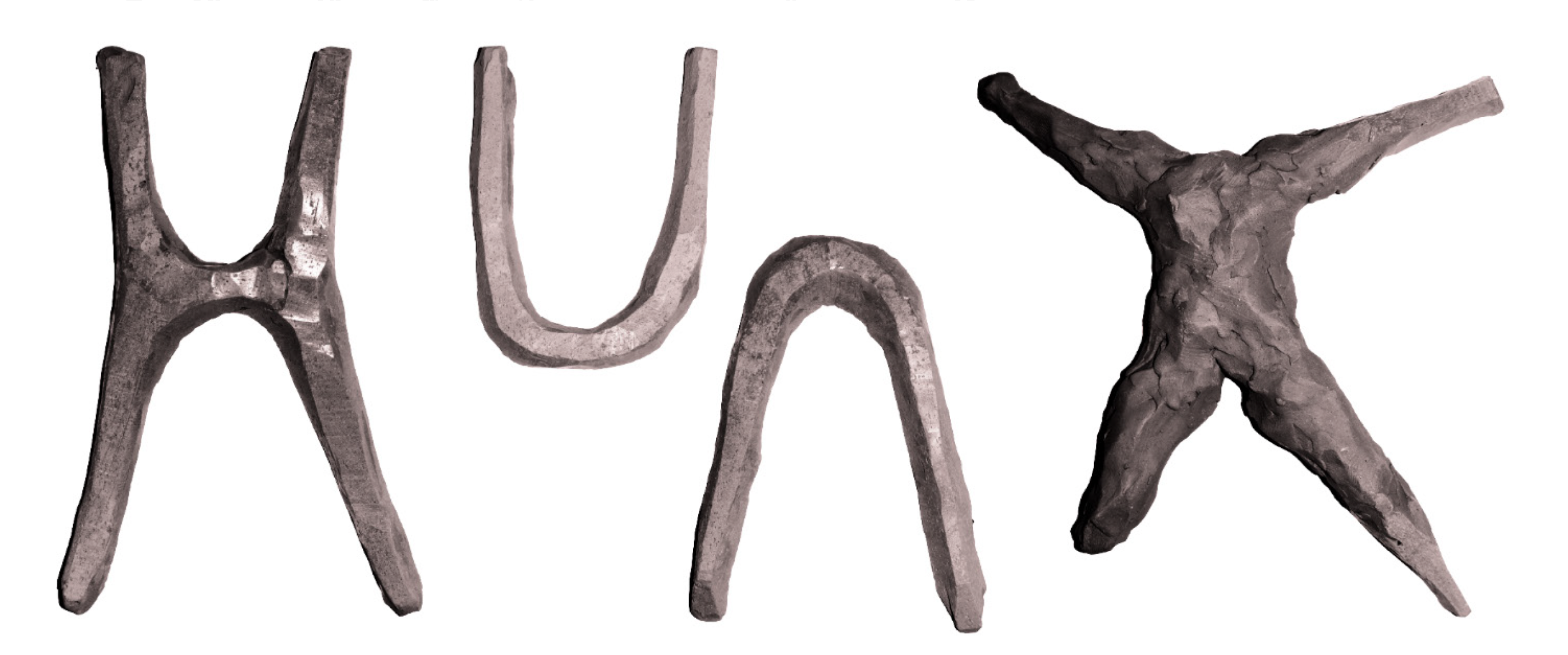Jazz Space
Individual
Design
Jul 2023






Early Graphics - Facade Elements
Jazz Space Pavilion seeks to translate measures of jazz music into physical space - questioning how we may experience jazz beyond the acoustic sense. Imitating jazz principles, the facade acts as a prototype to test a bridge from acoustic into architectural language, meanwhile paying homage to cultural elements.
Facade Breakdown - Origins and Heritage


Thank you Jazz
Thank you Sun Ra